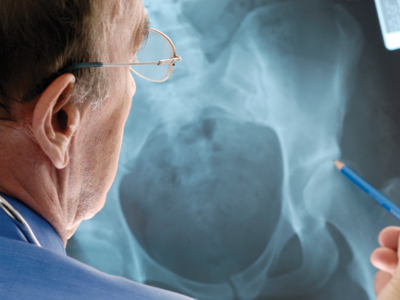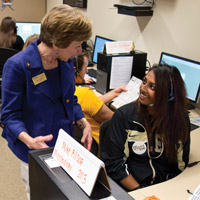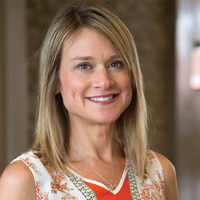Planning for the Inevitable

Boomers are the major reason for projections that the number of Americans 65 and older will reach 88.5 million by 2050 — more than double the estimated 40.2 million from a 2010 U.S. Census report, “The Next Four Decades.”
By 2030, when all of the boomers are 65 or older, they will constitute 19 percent of the total population. This will have enormous implications for government programs like Social Security and Medicare. Baby boomers should expect to spend more than $3,899 annually for health care, according to the U.S. Bureau of Labor Statistics.
That figure doesn’t include in-home nursing care or residential care in an assisted living facility or nursing home.
Laura Sands, the Katherine Birck Professor of Nursing, is studying programs, interventions and policies that affect older adults. Although she’s not a nurse herself, Sands has worked with post-M.D. fellows and gerontologists to study disease and disuse (a result of injury, disease or lack of activity) as it leads to physiological changes and limitations.
“Disease and disuse results in disability when there is a lack of resources to overcome those limitations,” Sands says. “Many researchers look at the disease for the disuse, but fewer are looking at what happens between the transition from limitations to disability.”
A limitation might be as simple as having difficulty bending to put on shoes, something that could be overcome by wearing loafers. Other limitations are more challenging and result in older adults’ requiring more care from others either at home or in a nursing home.
Ways to prevent disease are to adopt healthy behaviors and comply with doctor’s orders. The orders, however, become more complex as one develops chronic diseases, Sands says.
Researchers within the School of Nursing are developing self-care interventions that are easy for patients to adopt. Nancy Edwards, associate professor of nursing, is looking at how to improve quality of life in those who are very disabled, including those with severe dementia. She has implemented a chair-based exercise program, in collaboration with colleagues from the Department of Health and Kinesiology, to improve range of motion and strength. As an added benefit, Edwards has seen an improvement in participants’ moods.
“A lot of people think that managing illness is taking medication properly, but there’s more to it,” Sands says. “It also means seeking the appropriate medical care at the appropriate intervals.” For example, diabetics need to have regular blood tests, but in a study conducted with the Indiana University Medical Group, 20 percent of patients didn’t show up for appointments.
Lynn Nuti, a graduate nursing student, works with Sands and Mark Lawley, professor of biomedical engineering, to develop care planning and scheduling algorithms to get patients into their primary care physician’s office at the correct intervals. Nuti is automating the published guidelines and integrating it into scheduling software at medical offices.
“These kinds of innovations are important,” Sands says. “We all have information overload and the last thing we need is another email reminder. This is a proactive intervention that schedules patients and reminds them at the proper interval to have those tests and procedures done that are required in the course of their chronic illness.”

Nancy Edwards, associate professor of nursing, has implemented a chair-based exercise program to improve the range of motion and strength in older adults.
Getting the necessary help is just as important in treating or managing a disease as it is in preventing disease, Sands says. Without proper care — whether it’s self-care or medical care — people will become sicker and create a greater burden on the health care system.
Baby boomers will be big drivers of available health care options in the future.
“We receive a lot of messages as we grow up,” Sands says. “One is ‘save for retirement’ and another is ‘save for college.’ Few people want to think about saving for future disability and yet it’s just as real. That’s a message that needs to be made clear to baby boomers.”











